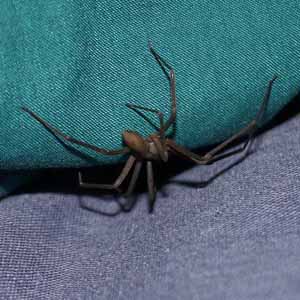An unexpected turn of events: A rare case of Acquired Haemophilia A after a violin spider bite

Accepted: 19 May 2022
All claims expressed in this article are solely those of the authors and do not necessarily represent those of their affiliated organizations, or those of the publisher, the editors and the reviewers. Any product that may be evaluated in this article or claim that may be made by its manufacturer is not guaranteed or endorsed by the publisher.
Authors
We report an interesting clinical case of Acquired Haemophilia A (AHA) after a probable Loxosceles rufescens spider bite in a 73- year-old woman, admitted to an Emergency Department (ED) of Central Italy during April 2019. AHA is a rare disease, whose acute clinical manifestations are not widely known by most ED physicians; its prompt recognition and treatment are crucial to avoid fatal bleeding. In particular, the development of AHA after a violin spider bite (another rare and poorly characterized clinical condition) has never been described. Therefore, our case report could provide useful insight into the understanding and treatment of such unusual and possibly life-threatening conditions.
How to Cite
PAGEPress has chosen to apply the Creative Commons Attribution NonCommercial 4.0 International License (CC BY-NC 4.0) to all manuscripts to be published.

 https://doi.org/10.4081/ecj.2022.10457
https://doi.org/10.4081/ecj.2022.10457








